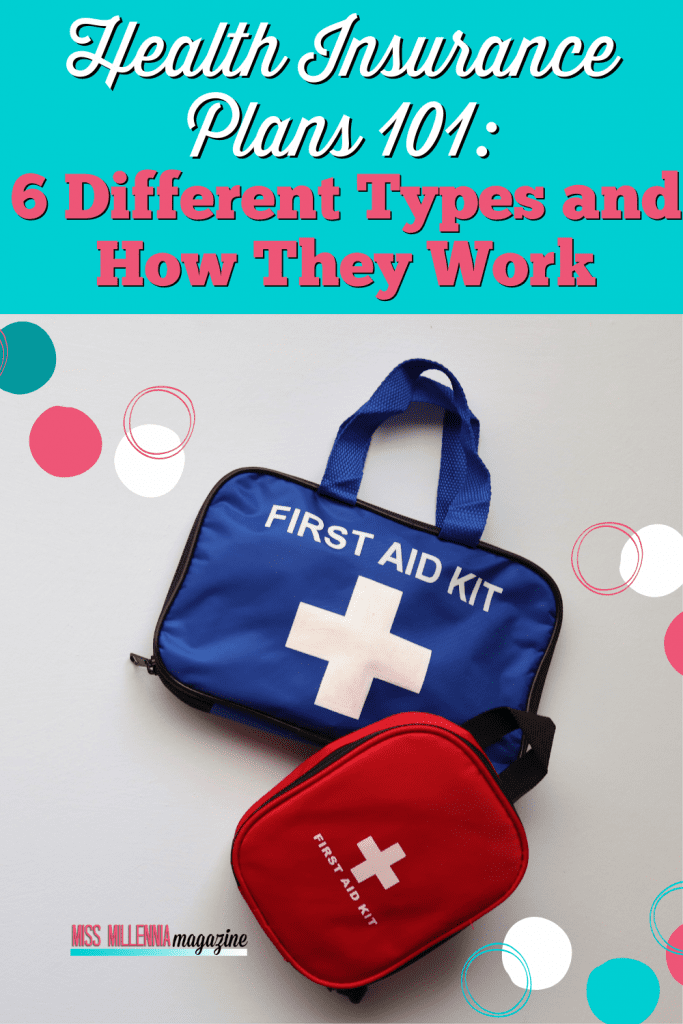Health Insurance Plans 101: 6 Different Types and How They Work

A health insurance plan helps you take care of your health care costs and needs. The cost of paying health care bills without insurance can be overwhelming, especially if it is a chronic illness.
Health insurance reduces the cost to reasonable upfront costs. There are various types of health plans with designated rules and arrangements.
Preferred Provider Organisations (PPOs)
They provide an extensive network of providers so you can have many healthcare facilities and professionals to choose from as you plan your individual life. The plan does not require you to choose a primary caregiver. You can choose providers from outside the network, but you will need to dig deeper into your pockets.
Also, you do not need a referral to see a specialist. Compared to other insurance plans, PPOs have higher premiums for individual and family coverage.
How it Works
In this type, medical professionals contract with the insurance company to provide services to its consumers. They agree on rates usually lower than the provider’s usual charges. The insurers pay the PPO to access the network of healthcare providers in exchange for lower rates.
You must pay a co-payment during provider visits or meet a deductible for insurance to cover the claim. An out-of-network plan is also available; you need to pay a reasonable and customary fee. Coverage does not apply if you exceed the fee. However, in most cases, you will only need to pay for the excess charges out-of-pocket.
Health Maintenance Organisations (HMOs)
HMOs, provide a local network of doctors, pharmacists, hospitals, and other professionals and facilities you can choose from. It limits coverage to medical care from practitioners who work for HMO or contract them. The practitioners, too, are protected by insurance such as pharmacists’ liability insurance and medical malpractice insurance.

HMOs, require you to select a primary health care provider who will serve as your home base for medical attention. They will handle all your medical needs and refer you to an in-network specialist when need be. They will also pay keen attention to your medical history, advise accordingly and follow up on any medical challenge you may be encountering.
How it Works
You are required to pay a monthly or yearly fee. This is because the HMO enters into contracts with medical practitioners and then directs you to them. The premiums you pay are lower than other insurance plans since the health workers have the organization referring patients to them. The lower pay does not, however, compromise the quality of services.
If you choose to be insured under HMO, you are advised to work or live within the network’s plan to be permitted coverage. If an emergency happens outside the network, the HMO may pay for the expenses. However, if you receive non-emergent care outside the network, you will have to pay out-of-pocket.
Point-of-Service Plans (POS)
It has features of PPOs and HMOs. However, it requires you to select a primary care doctor or physician to attend your regular checkups and handle referrals. It also requires you to choose other primary care professionals.
If you need the services of a specialist, you can choose an in-network or out-of-network specialist, but you will have to pay more from your pocket for out-of-network personnel. Your primary care doctor is responsible for referring you to a specialist.
How it Works
The plan requires you to pay a fee every month or year. The cost is low, but the number of healthcare providers is also limited. The POS allows you to go out of the network to seek medical services. If your primary caregiver makes a referral, you will pay more than if you go outside without a referral.
POS plans offer countrywide coverage for you, which is a significant advantage, especially if you travel or relocate frequently. However, on the downside, out-of-network deductibles are very high. Therefore, if you want to use out-of-network services, you will pay the entire cost of medical care until you reach the insurance plan’s deductible.
Exclusive Provider Organisations (EPOs)
It gives you a network of providers from which you can choose. However, they only include coverage within the network most of the time unless it is an emergency. However, if you visit the facility or provider outside the network, you are likely to cover the entire costs of treatment.

Depending on the EPO plan, you may choose a primary caregiver or not. If you need to see a specialist within the network, you do not need a referral from your primary care doctor. Instead, you can look for a specialist yourself.
How it Works
With EPO, you will pay out of pocket until you reach a deductible before the insurance starts covering your medical expenses. After that, the company provides middle-of-the-road premiums, but the specific charges depend on the type of plan and where you live.
High Deductible Health Plans (HDHP)
An HDHP plan has lower premiums and higher deductibles than a traditional health plan. In addition, it involves a deductible of not less than $2800 for a family plan and at least $1400 for an individual plan. The maximum out-of-pocket amount should not exceed $700 for an individual and $1400 for a family plan.
How it Works
The plan requires you to pay out of pocket until you meet the plan’s deductible, after which the insurer starts covering eligible medical care expenses. The amount of deductible depends on the plan you choose. The higher it is, the more you will be required to pay before reaching your deductible.
Depending on the plan, you can pair HDHP with a Health Savings Account (HSA). You will then use the money in your HSA to cover the medical bills. In doing so, you can save some money since the funds deposited to an HSA are tax-free.
You can enroll in an HDHP via an employer-sponsored plan or purchase the cover in an individual/family capacity. You need to enroll during the open enrollment period. Otherwise, you will need a qualifying event to sign up. If you are registering using your employer’s plan, ensure you do so during your employer’s open enrollment period.
Health Savings Account (HSA)
Simply put, HSA is a tax-favored account you create for paying medical expenses. It lets you save a pre-tax income to pay for the health care expenses that your insurance does not pay. You can withdraw money from that account for non-medical expenses, but if you do so before you turn sixty-five, you will be required to pay income taxes and a 20% penalty.

HSA is used to cater for IRS qualified out-of-pocket medical charges such as coinsurance, deductibles, and copays. The funds can cover your spouse and other dependents even if they are not covered on your medical plans. Further, the funds in the account can grow, earn interests and build savings.
How it Works
It would help if you were enrolled in a qualified HDHP to qualify to create an HSA. Also, you should not be covered by any other non-HDHP plan or claimed as a dependent on someone’s tax return. The contributions towards the plan are $3350 for individuals and $ 7100 for family plans.
You can contribute to the account individually, through someone you know, or your employer can deposit funds to your account. Either way, the money is not taxed. As a result, you can save and get more from your plan. For instance, your employer’s contribution is not taxed as your income.
Conclusion
To select the plan that will suit your needs best, you need to understand your health care needs. How often you visit a doctor and the need for more than preventive care is among the considerations to guide your choice.
Furthermore, you need to understand the advantages and disadvantages of the various options available so that you can make the right decision for your family. If you take some time to plan, you are likely to choose the right type of insurance.







